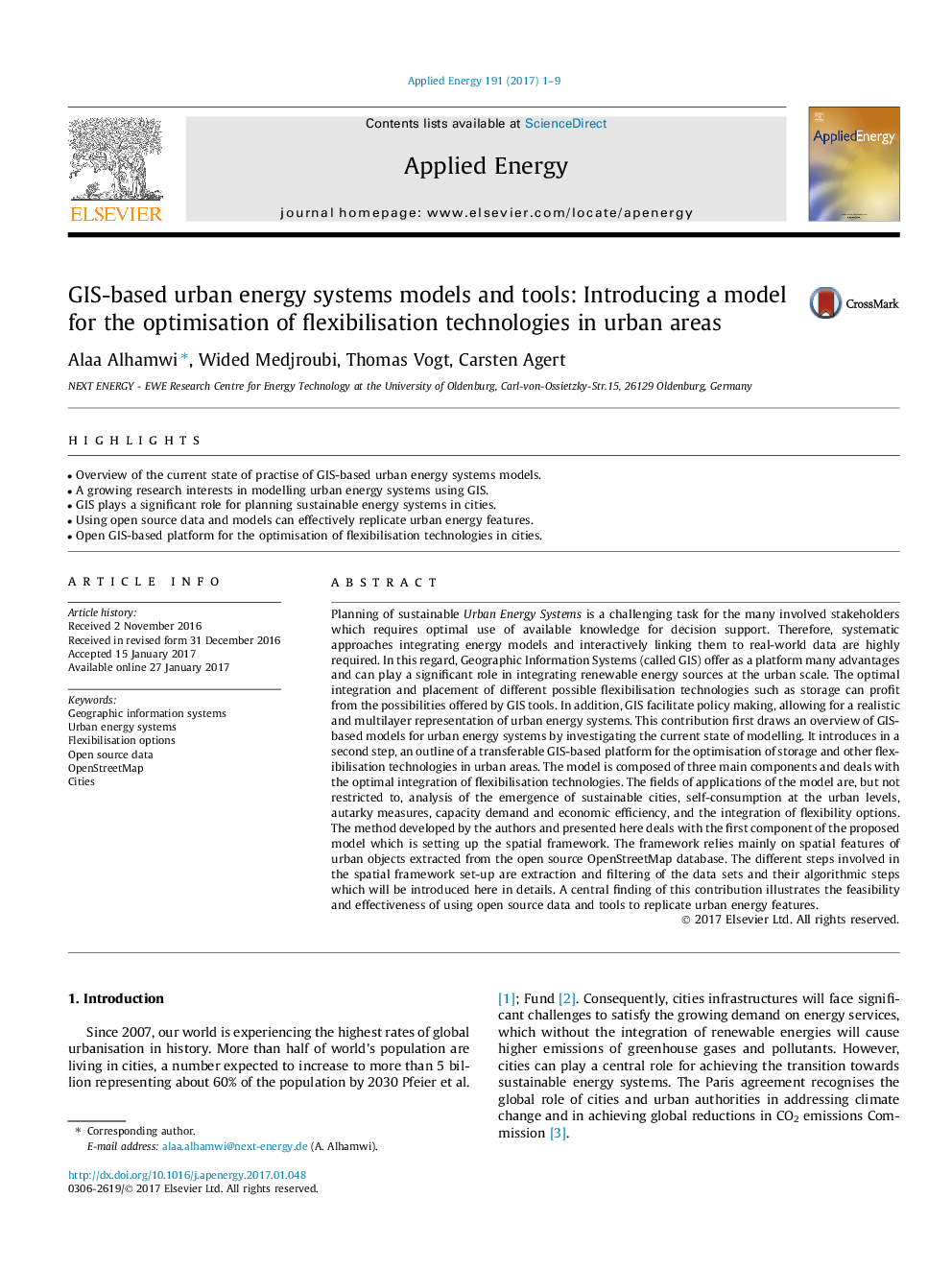| کد مقاله | کد نشریه | سال انتشار | مقاله انگلیسی | نسخه تمام متن |
|---|---|---|---|---|
| 6478712 | 1428099 | 2017 | 9 صفحه PDF | دانلود رایگان |

- Overview of the current state of practise of GIS-based urban energy systems models.
- A growing research interests in modelling urban energy systems using GIS.
- GIS plays a significant role for planning sustainable energy systems in cities.
- Using open source data and models can effectively replicate urban energy features.
- Open GIS-based platform for the optimisation of flexibilisation technologies in cities.
Planning of sustainable Urban Energy Systems is a challenging task for the many involved stakeholders which requires optimal use of available knowledge for decision support. Therefore, systematic approaches integrating energy models and interactively linking them to real-world data are highly required. In this regard, Geographic Information Systems (called GIS) offer as a platform many advantages and can play a significant role in integrating renewable energy sources at the urban scale. The optimal integration and placement of different possible flexibilisation technologies such as storage can profit from the possibilities offered by GIS tools. In addition, GIS facilitate policy making, allowing for a realistic and multilayer representation of urban energy systems. This contribution first draws an overview of GIS-based models for urban energy systems by investigating the current state of modelling. It introduces in a second step, an outline of a transferable GIS-based platform for the optimisation of storage and other flexibilisation technologies in urban areas. The model is composed of three main components and deals with the optimal integration of flexibilisation technologies. The fields of applications of the model are, but not restricted to, analysis of the emergence of sustainable cities, self-consumption at the urban levels, autarky measures, capacity demand and economic efficiency, and the integration of flexibility options. The method developed by the authors and presented here deals with the first component of the proposed model which is setting up the spatial framework. The framework relies mainly on spatial features of urban objects extracted from the open source OpenStreetMap database. The different steps involved in the spatial framework set-up are extraction and filtering of the data sets and their algorithmic steps which will be introduced here in details. A central finding of this contribution illustrates the feasibility and effectiveness of using open source data and tools to replicate urban energy features.
Journal: Applied Energy - Volume 191, 1 April 2017, Pages 1-9